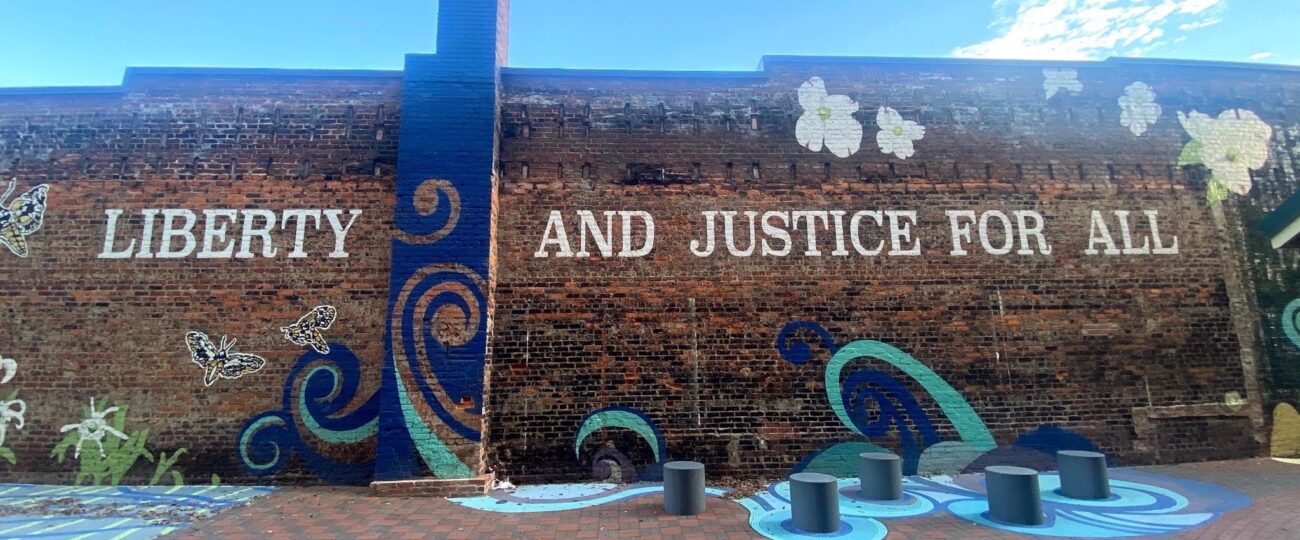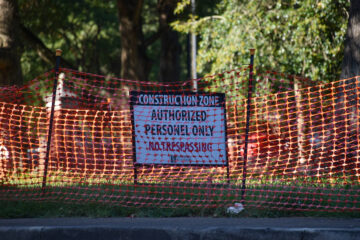Completed back in 2016, the Rock Hill landmark, Freedom Walkway, continues to empower and inspire racial justice in Rock Hill and surrounding areas.
Freedom Walkway is located at 139 E. Main St. in Rock Hill. The landmark consists of a mural as well as a mosaic and many other objects that symbolize various historical events that involve the fight for racial equality and justice.
The walkway was officially inspired by the story of the Friendship Nine.
According to a sign outside of the landmark, “On January 31, 1961,10 students from Friendship Jr. College were arrested when they refused to leave McCrory’s [a restaurant on Main St.]. Nine would not pay their fines and became the first Civil Rights sit-in protesters in the nation to serve jail time. This new ‘Jail No Bail’ strategy by ‘the Friendship Nine’ was soon adopted as the model strategy for the Freedom Rides of 1961.”
There were numerous local artists who worked together to create Freedom Walkway such as Juan Logan, Laurel Holtzapple, Carrie Gault and Sharon Dowell along with several civil, structural and electrical engineers.
“Think about everything that would have to go into it from putting in the electrical grid, to plants, the stonework, even the building next door, and how it was sort of integrated into the landscape and the space that was being built for the apartment building. So, everyone working together is what I think a successful project is really about,” Logan said.
Because of the various designers and engineers who had a hand in establishing Freedom Walkway, Rock Hill residents and visitors are now welcome to visit the landmark and learn about the numerous symbolic elements incorporated into the project.
“The turbulence and the obstacles that have been happening for 400 years, in the 60s and then, of course, within the last year, it seems to bubble up and I don’t think our country has properly addressed it, so it keeps on bubbling up,” Holtzapple said. “I think the symbols that we’ve included such as the boulders that represent the historical obstacles and the turbulence you can see working its way up the wall, are ideas that are still going on today, unfortunately.”
Parts of the walkway were designed and created by the artists involved in the project, while parts of the walkway are considered historical artifacts and the artists were diligent in incorporating them into the project.
One of the most significant parts of the mural is the word “fatigue.” The word was left over from what was originally displayed on the wall.
“Can you imagine working and struggling for freedom for 400 years plus and just how tired you would be after all of those years. [Fatigue] just seems so appropriate,” Logan said in a video featured at freedomwalkway.com.
The wall in which the main part of Freedom Walkway lies is the wall of the Woolworth and the McCrory’s lunch counters where the Friendship Nine were denied service. The building was slated for demolition in 2014, but the wall was able to be salvaged with a few of the original paintings that inhabited the wall.
“Rock Hill has a lot of these passageways and alleys, which is great because it provides that connectivity for the pedestrian,” Holtzapple said. “[The city] wanted to create an artwork in this specific alleyway to honor the Friendship Nine. So, the impetus was to honor the Friendship Nine, but then it became the honoring of just, courageous acts and courageous people within the history of Rock Hill.”
The most prominent part of the mural is the words, “LIBERTY AND JUSTICE FOR ALL.
“The opportunity to paint the mural in the Freedom Walkway was a pleasure. It was an honor to contribute to the first civil rights themed public art in Rock Hill, one that was thoughtfully and beautifully designed,” Dowell said. “The summer of 2016, BLM protests erupted all over the country. I remember sitting on the scaffolding painting the words ‘LIBERTY AND JUSTICE FOR ALL’ and my heart was heavy, feeling the poignancy of the project, the importance of the imagery incorporated into the walkway, tied to highlighting the local flora and fauna, but also the historical inequality and systemic racism in our country.”
Although the walkway was completed in 2016, its relevance and importance still hold true today, especially in light of the strides towards racial justice in 2020. The walkway serves as an important reminder that the fight is not over.
Photo by Kaily Paddie




